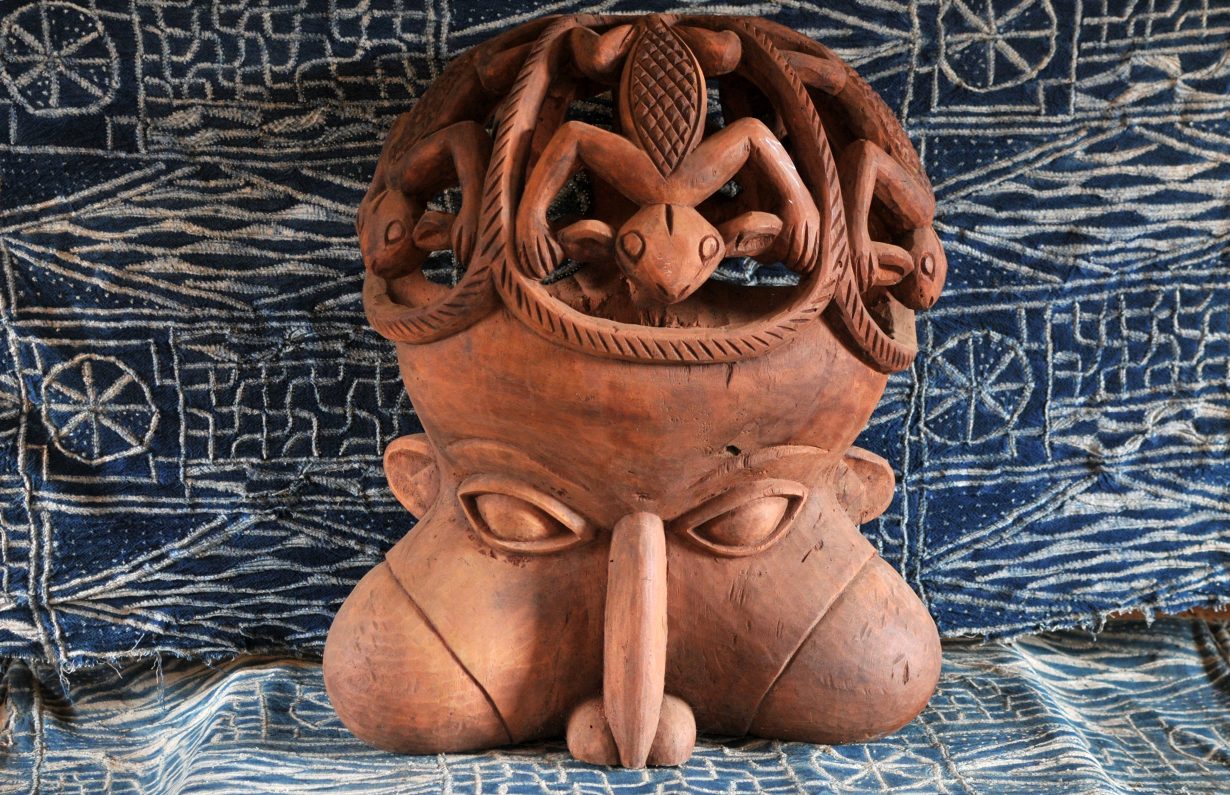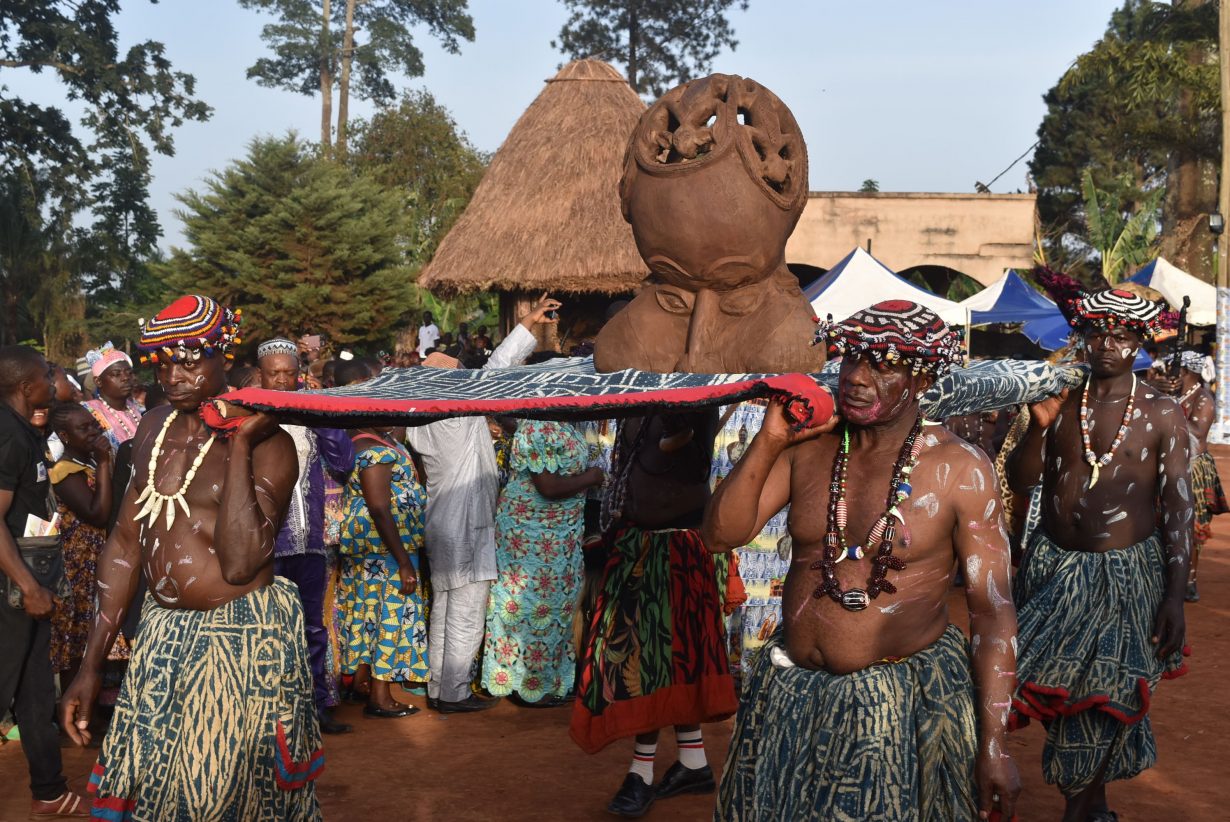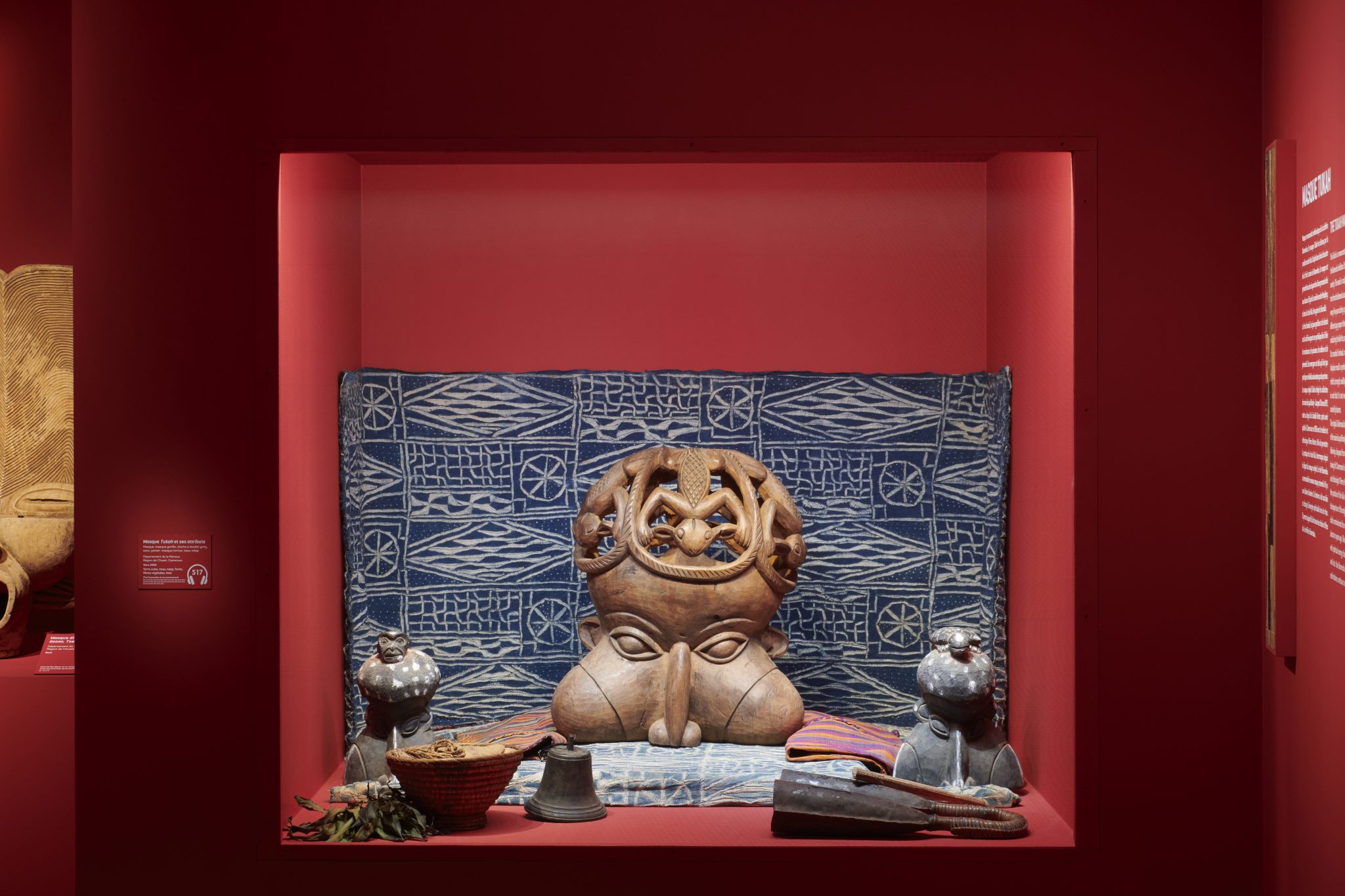A new exhibition at the musée du Quai Branly in Paris shows what can be achieved when institutions rely on cooperation and exchange, and not the custodianship of colonial collections
Coiffed with a band of lizards, eyes cast down toward the ceremonial cloth on which it sits, a monumental wooden mask is currently resting at the musée du Quai Branly in Paris. ‘Resting’ is not a euphemism; unlike most of the traditional African carvings currently on display in Western museums, this one will shortly resume the purpose for which it was built. It’s on loan to the museum from the chiefdom of Bamendu, in the Grassfields Plateau to the northwest of Cameroon. Known as the Tukah and used by the Kak secret society in agrarian fertility rites, the mask is so sacred that the curators of the exhibition in which it appears, Sur la Route des Chefferies du Cameroun (On the Road to the Chiefdoms of Cameroon), were not allowed to touch it; installing the object for the show fell to Kak initiates, flown in from Cameroon.
The show has been organised by the Route des Chefferies, an association that works to safeguard traditional ways of life in the Grassfields; where other communities of sub-Saharan Africa were profoundly altered during the colonial era, the ancient chiefdoms of Cameroon had survived largely intact, yet by the 1990s Sylvain Djache Nzefa, founding director of the organisation, noticed that the old ways were in decline. With objects gathered from all the major chiefdoms in the region, the exhibition is a testament to the Route des Chefferies’s achievements in the last three decades. It introduces visitors to a world governed by complex and ancient philosophical systems for understanding the universe and humanity’s place within it – where men and women can acquire the attributes of animal doubles through the magical practice of totemism, where secret societies stage elaborate masquerades to commune with natural and supernatural forces, and where the arts of sculpture and architecture serve to underscore the paramount power of the chief.


Djache Nzefa, who is also the exhibition’s lead curator, tells me that the principal challenge he faced was “involving the traditional chiefs… who had to ask their societies for permission to allow these objects to leave, so that they did not disturb the calendar of ritual events”. But the exhibition’s greatest strengths result from the care taken to ensure that these communities are granted agency in deciding how their culture is represented. The scenography was developed by Cameroonian artists, with each entranceway guarded by totemic doorposts and mantels, while a vivid mural that spans the width of the central corridor was realised on site by the painter Catherine Bella. And this approach has also enabled Djache Nzefa to secure objects of enormous power and significance that have never been seen in the West before – including a suite of magnificent carved thrones from each of the various chiefdoms. “We wanted to present this exhibition with the musée du Quai Branly to show that there is another way of cooperating between cultural institutions from the North and the South” Nzefa says. “And we wanted to show the international public and the Cameroonian diaspora in France that these rich traditions are rooted in our identity… We are reinventing ourselves every day.”
As the call for the restitution of objects looted from Africa during the colonial era has gathered momentum in recent years, ethnographic museums throughout the West have been searching for their own means of reinventing themselves. Djache Nzefa, however, emphasises the “importance of traditional authorities” – who have not always been heeded in the restitution debate – “in the preservation, safeguarding and promotion of their heritage”. Across the Grassfields, the Route des Chefferies has been working in conjunction with the local chiefdoms to establish community museums, developing models for the display of Cameroonian heritage that are not indebted to the examples of the West. That means, in practice, that glass vitrines are vetoed; sacred objects are displayed in ways that befit their function, so that the sense of these objects as ‘living’ remains intact. Ownership of the objects in these local museums remains with the community. Masks and sculptures are taken up for use in religious ceremonies, before being put back on display.

Sundry objects from the collection of the Quai Branly are dotted throughout the exhibition in Paris, but by and large it is a terrific example – the most sustained yet staged in a Western institution – of what can be achieved when museums rely on cooperation and exchange rather than the custodianship of collections. That this is a bold move by the Quai Branly is most evident in the example of the Tukah mask – which is, in fact, a replacement for an earlier piece, removed from Cameroon in 1958 by the missionary doctor and ethnographer Pierre Harter, who donated it to the French state in 1992. The ‘original’ is now part of the permanent collection of the Quai Branly, but I find myself leaving the exhibition without any particular wish to go and find it. How much more thrilling to have seen the copy, knowing that its stay in Paris is temporary and that soon it will be returning home to carry on its duties?
